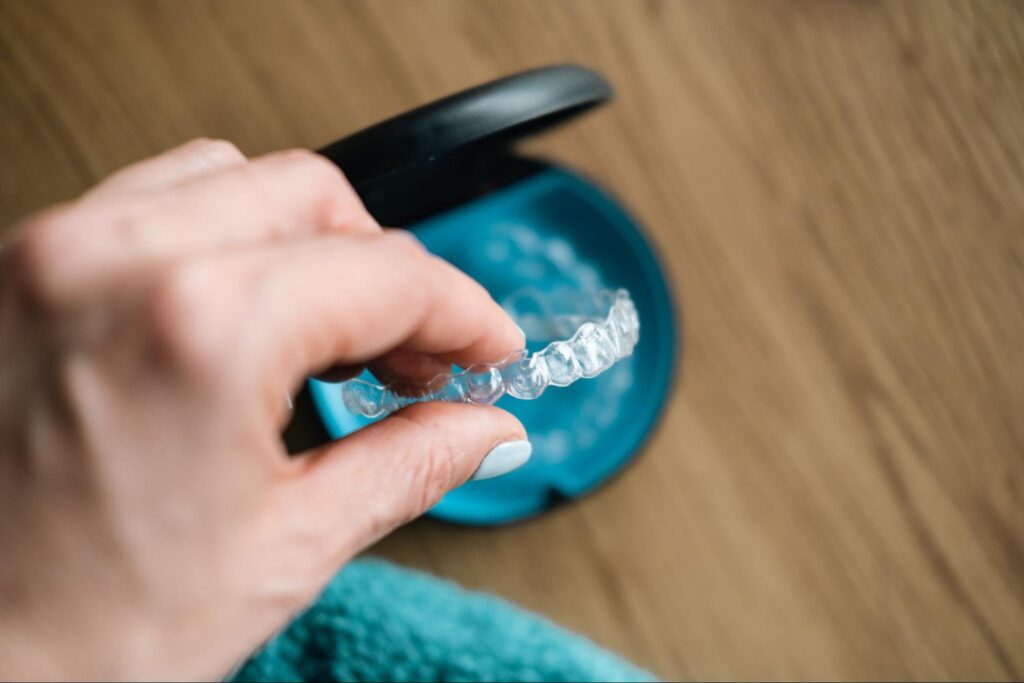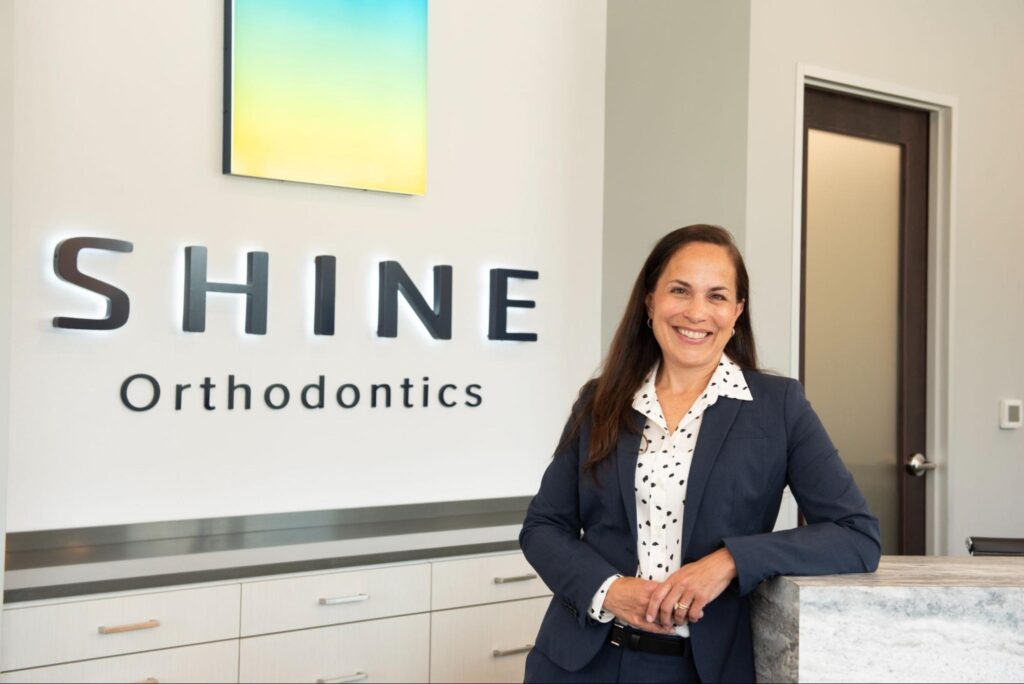You spent months, maybe even a couple of years, wearing braces or Invisalign trays. The last thing you want is to see your teeth drift back after everything you went through. Retainers are what keep your results from slipping.
Shine Orthodontics in Holly Springs is where Dr. McGrogan helps patients wrap up treatment with a clear, realistic plan. Every smile needs a little support after the active phase ends. Knowing what to expect and how to stay on track makes all the difference when it comes to keeping your smile where it belongs.
Why Retainers After Braces Matter
Once your braces or aligners come off, your teeth aren’t locked into place. The bone that surrounds each tooth is still soft from the pressure used to move them. That bone needs time to rebuild and stabilize in its new position. Without a retainer, your teeth can start shifting almost immediately.
It’s not uncommon for our team to see a patient finish treatment with great results, skip their retainer for a few weeks, and start noticing small gaps or crowding. Those subtle changes can turn into bigger ones fast.
Wearing a retainer gives your jawbone time to solidify around the teeth again. It also supports the ligaments that connect the teeth to your gums, helping them settle into the new alignment. Retainers are a low-effort way to protect all the work you and your orthodontist put in. They may seem simple, but they play a critical role in keeping your smile right where it should be.
What to Expect After Treatment
Most patients will wear their retainer full-time right after their orthodontic treatment is finished. That usually means all day and night, taking it out only for meals and brushing. It might feel like a step backward, but it’s actually what locks in your results.
After a few months, Dr. McGrogan will usually shift you to nighttime wear. That’s the maintenance phase, and for many people, it’s lifelong. Teeth keep shifting throughout adulthood, especially the bottom front ones. Wearing your retainer at night is what keeps things where they belong.
If you ever notice your retainer feels tight after skipping a few nights, that’s your warning sign. Your teeth are already trying to move. The sooner you get back on track, the better.
Why Follow-Up Visits Still Matter
Retainers might feel like the easy part, but they’re just as important as the active phase of your treatment. Our team can help you understand exactly how often to wear yours and when it’s okay to shift into nighttime use.
That’s why follow-up visits still matter, even after your braces or aligners are done. These check-ins give your orthodontist a chance to catch early signs of shifting and make sure your retainer is still doing what it should. Sometimes a small adjustment is all it takes to keep things on track. It’s a simple step that goes a long way toward protecting your results.
What to Expect with Retainers
There’s an adjustment period, especially if you’re wearing a full-time removable retainer. You may notice a small lisp at first or feel extra saliva in your mouth. That usually goes away within a few days. To make things easier:
- Always store your retainer in its case
- Keep it away from pets (they love to chew them)
- Clean it daily using a soft brush and cool water
- Avoid heat or hot water; it can warp the shape
The more consistent you are, the faster it becomes second nature.
Retainers and Invisalign vs Braces
Retainers after braces work the same way, whether you had traditional metal braces or Invisalign. The treatment paths may look different, but the end goal is the same, which is keeping your results stable.
Invisalign patients sometimes assume that because their trays were removable, they won’t need a retainer. The same risk of shifting applies. Dr. McGrogan creates retainer plans tailored to each patient, based on how their teeth moved during treatment and how likely they are to relapse.
For those who wore metal braces, retainers are especially helpful in preventing movement in teeth that had more dramatic correction. Even small gaps or rotations can come back if you stop wearing the retainer too soon.
What Happens If You Stop Wearing Your Retainer
Some patients stop using their retainer because it feels annoying or unnecessary once their teeth look good. It doesn’t take long for changes to show up. You might notice:
- Crowding in the lower front teeth
- A gap reopening between the front teeth
- A retainer that no longer fits comfortably
- Jaw or bite discomfort that wasn’t there before
The sooner you catch the issue, the easier it is to fix. In some cases, a quick adjustment or a new retainer can solve it. In others, retreatment may be needed. That’s why regular check-ins at Shine Orthodontics are so helpful. We can help you catch small changes before they get worse.
Keep Things On Track Without Losing Progress
If it’s been a while since you last checked in about your retainer, now is a good time to make sure everything still fits the way it should. Small shifts are easier to manage early on.
Dr. McGrogan can walk you through what your next step looks like based on where you’re at now. You can reach out to Shine Orthodontics to schedule a visit at our Holly Springs office or ask a quick question.


